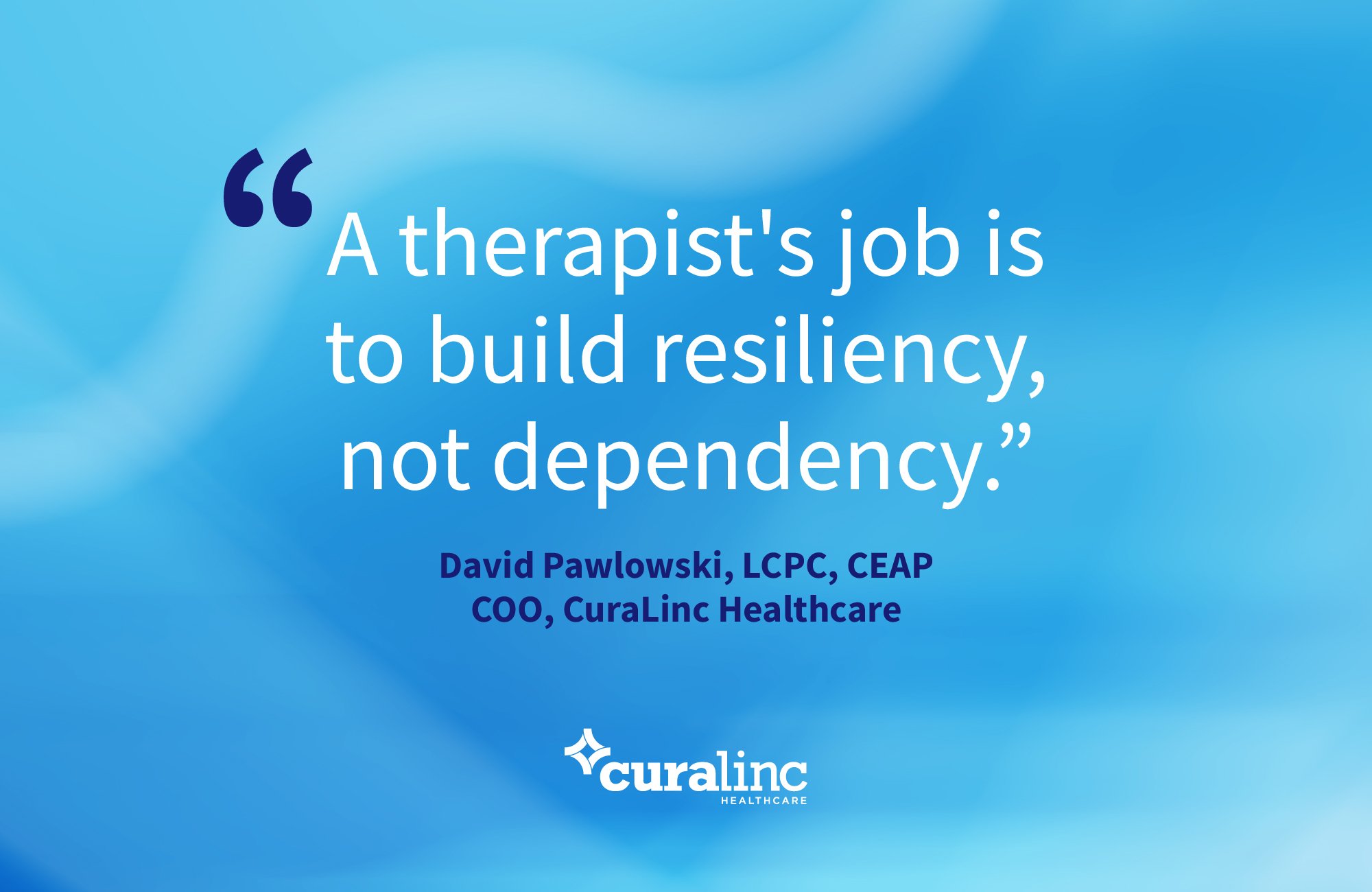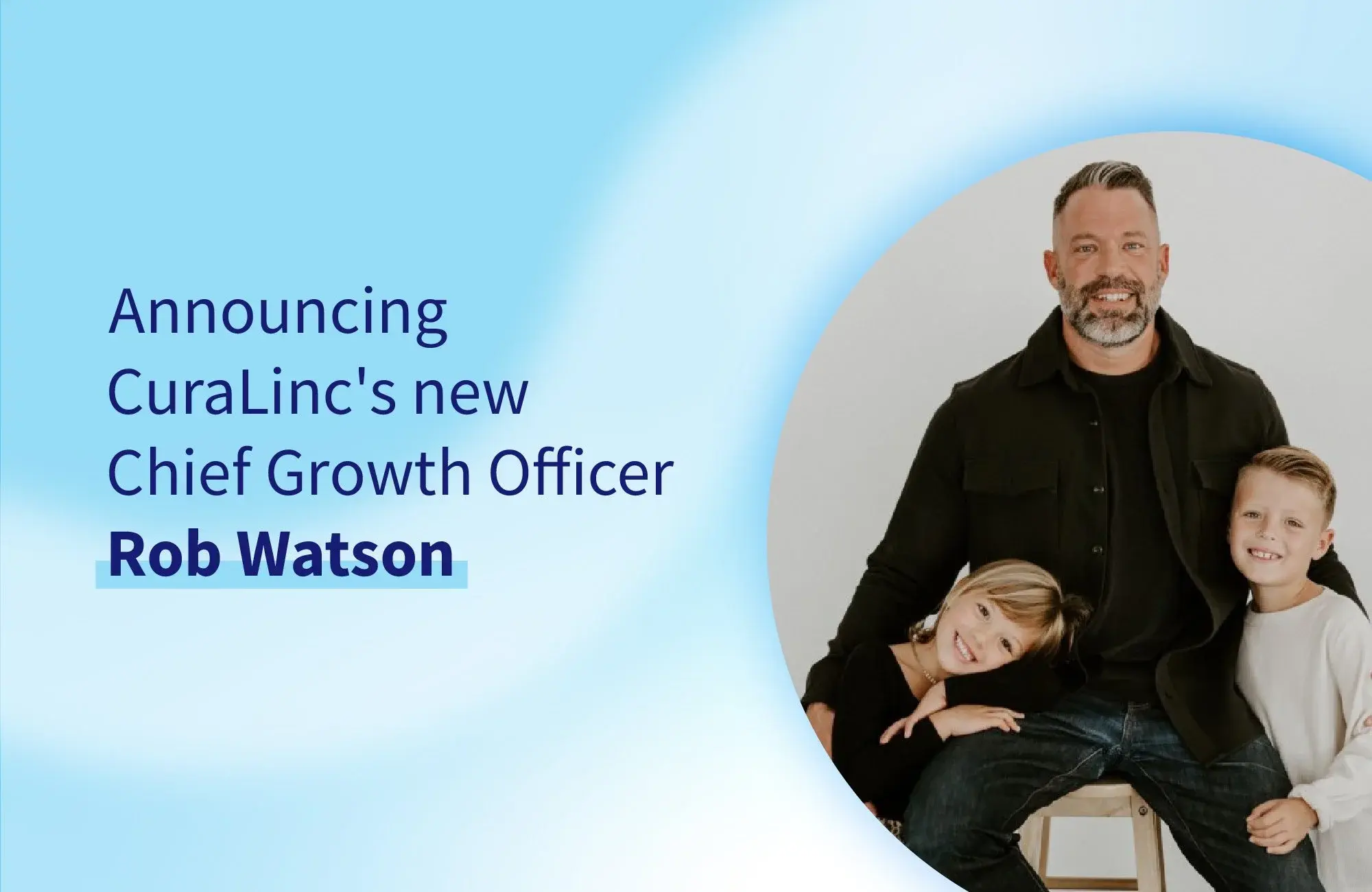By David Pawlowski, LCPC, CEAP
Chief Operating Officer, CuraLinc Healthcare
When I was in graduate school, my clinical supervisor told me something I’ve never forgotten:
“A therapist’s purpose is to work themself out of a job.”
That one sentence captures the essence of clinically appropriate care—helping people feel better and function better as quickly and effectively as possible. It’s about connecting each person to the right care, at the right time, for the right amount of time. The goal isn’t endless therapy. It’s resolution.
When I first started my career, I never imagined I’d one day be helping lead a global organization dedicated to employee wellbeing. I just knew I wanted to help people, support their goals, enhance their quality of life, and empower them to realize their full potential. That purpose still drives me today. But over time, the way behavioral health is delivered and, in some cases, the incentives that shape it have both evolved.
Many of the EAP replacements in the market have built their business models around the medicalization of everyday stress. They position themselves as wellbeing platforms, but their real incentive lies in converting everyday human challenges into billable clinical encounters. While workforce mental health programs must be able to support complex mental health concerns, of course, the care plan for those concerns shouldn’t be the same as the plan for someone who has a little stress in their life.
The impact is measurable, and employers are feeling it.
-
Behavioral health utilization among commercially insured Americans has surged by 44% since 2018, even as primary care visits have declined by 7%, according to Trilliant Health.
-
In 2024, behavioral health visits actually surpassed primary care visits for the first time, reaching 66.4 million compared with 62.8 million.
-
PwC’s Behind the Numbers 2026 report found a 45% rise in behavioral health claims between January 2023 and December 2024, with actuaries citing behavioral health as one of the top drivers of medical cost inflation.
For employers, those trends translate directly into rising claims costs, unpredictable budgets, and growing frustration with solutions that prioritize utilization over resolution.
At CuraLinc, we believe clinically appropriate care looks different. It means guiding each member to the level of support that meets their needs—not more, not less.
Our model includes:
- Short-term, solution-focused counseling that achieves a resolution rate of more than 95% in fewer than eight sessions, helping employees feel and function better faster.
- Single-session interventions that are evidence-based, available 24/7, and delivered by licensed clinicians to meet people in their precise moment of need without wait times, appointments, or delays.
- Mental health coaching as part of CuraLinc’s innovative continuum of care, clinically validated in a peer-reviewed study as an effective, outcomes-driven approach to improving wellbeing and performance.
- Virtual support groups led by licensed clinicians that provide participants the opportunity to both offer and receive support, fostering connection, belonging, and the reassurance that they’re not alone.
When members need a higher level of care, CuraLinc provides guidance and navigation to connect them with the most clinically appropriate in-network treatment providers and facilities, supported by case management to ensure connection to care, long-term recovery, and continued follow-up.
I'm proud to say that soon, we’ll be expanding that continuum even further by introducing longitudinal substance use disorder care, rapid access psychiatry, and complex case management to make specialized support even more accessible, effective, and affordable. Each addition to our model is designed to deliver the right care quickly and efficiently with no hidden fees or downstream claims costs. We are committed to providing true cost certainty to clients, rather than unpredictable, runaway expenses.
In the end, that’s what clinically appropriate care is all about—helping people reach a point where they no longer need us. It’s the same philosophy my supervisor shared years ago: our purpose isn’t to keep people in care forever, but to empower them to move forward feeling healthier, stronger, and ready to thrive. When that happens, employers win as well, with healthier employees, greater productivity, and lower behavioral health claims costs that reflect meaningful recovery and real impact.
Additional resources
Learn more about clinically appropriate care and CuraLinc’s model in our recent webinar, EAP Done Right: Results Without Runaway Costs.



